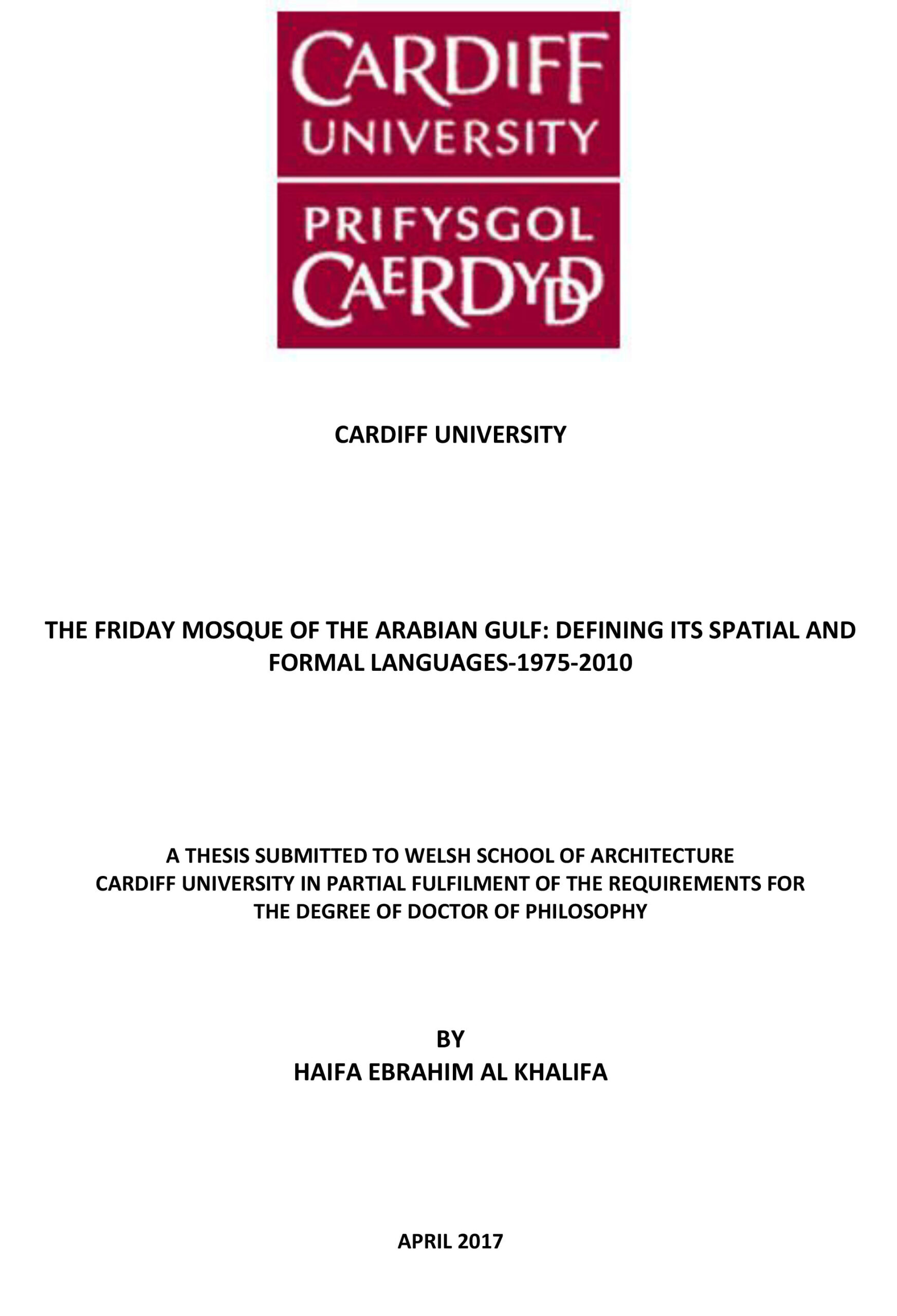
This thesis aims to understand the transformation process of the Friday mosque in the Arabian Gulf, in terms of its formal and spatial languages, within the period of 1975 to 2010. Essentially, the Arabian hypostyle mosque was the dominating architectural typology in the northern Gulf region until modern times. This traditional architectural language was transformed in many ways as a result of socio-political and economic factors subsequent to the discovery of oil in the region in the 1930s and 1940s. The transformation of the traditional Friday mosque was evident after the declaration of independence of the Arabian Gulf countries in the early 1970s, which coincided with the high revenues of oil. During this period and the decades following, the architectural discourse of the Friday mosque has express modernist influence and regional Islamic influences. This thesis provides insight into the contributing factors of these transformations and their role in shaping the contemporary Friday mosque character in the urban fabric of the Arabian Gulf cities. It investigates the vernacular and historical mosques in the region to establish the pre-existing context against which the analytical investigations of this study can be understood. The research focuses on comparative studies of the mosques of Abdel-Wahed El-Wakil, Rasem Badran, and Mohamed Makiya in the cities of Manama, Riyadh, Kuwait, and Muscat. These architects were selected owing to the significance and influence of their distinctive architectural languages based—in each case—on strongly articulated theoretical and socio-political positions. A spectrum of research approaches supports these comparative analyses, including: interviews with El-Wakil, Badran, and other significant actors; interpretative historical research; archival research; studies of the pre-oil settlements of the urban fabric of the Arabian Gulf; site visits to the representative traditional, contemporary mosque sites; and case studies sites included in the study.
Al-Khalifa, H., ‘The Friday mosque of the Arabian Gulf: defining its spatial and formal languages-1975-2010’ (Unpublished doctoral thesis: Cardiff University, 2017).
I agree to the terms outlined below:
You agree to upload and assign Mosqpedia Database the rights to use the content worldwide and in perpetuity across all current and future media platforms. Mosqpedia Database may edit, copy, adapt and translate your contribution.
The content will be distributed under the Creative Commons Attribution-Deed – Attribution-NonCommercial-NoDerivatives 4.0 International – Creative Commons
All data will be stored in line with data protection regulations.